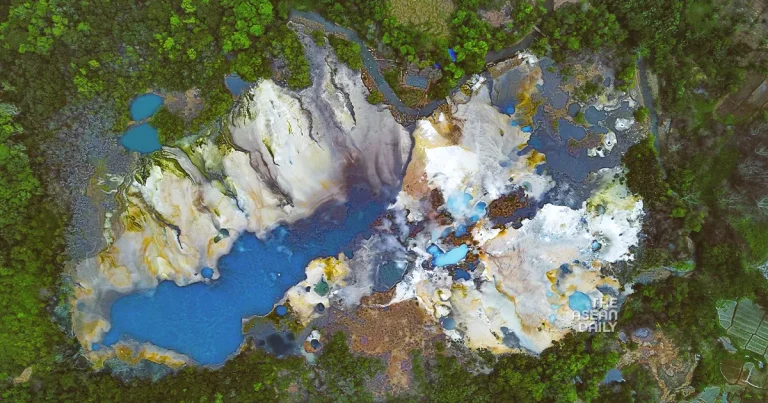25-5-2024 (JAKARTA) The Nirwana Crater, also known locally as Nirwana Keramikan, erupted three times on Friday morning between 8:30 and 9:00 AM Western Indonesian Time, causing significant concern among residents and authorities in Lampung Province, located in southern Sumatra.
In the wake of the eruptions, the Regional Disaster Management Agency of West Lampung, alongside the military and police forces, have issued advisories urging the public and tourists to remain calm yet vigilant. They have also advised against approaching the crater, which is famed for its hot springs and is a major tourist attraction.
The Nirwana Crater is an active volcanic caldera covering an area of 128 square kilometres. It is part of the Bumi Crater Tourist Park, which lies within the Bukit Barisan Selatan National Park in Suoh, West Lampung. This geothermal hotspot attracts numerous visitors annually.
Abdul Muhari, spokesperson for the National Disaster Management Agency (BNPB), reported that the eruptions initially caused panic among local residents and tourists. “Thankfully, there were no casualties, and the situation is gradually stabilising,” he stated.
This recent activity marks the first eruption of Nirwana Crater in 91 years, with the last recorded event taking place in 1933. Muhari detailed the sequence of the eruptions, explaining that the first emitted sand, the second released lava, and the third spewed thick black smoke, all accompanied by loud explosions that were audible from several kilometres away.
Post-eruption, the crater has shown increased temperatures and the emergence of small stones, prompting fears of possible subsequent eruptions. “Expert teams are currently conducting investigations. Updates on their findings and the latest conditions will be provided as soon as they are available,” Muhari added.
In response to the eruptions, local media have reported a suspension of tourism and farming activities in the area. The eruptions created cloud clusters that reached heights of up to 25 metres.
Indonesia, situated on the Pacific Ring of Fire, is home to approximately 127 active volcanoes and frequently experiences volcanic activity and earthquakes. This latest event at Nirwana Crater underscores the ongoing geological volatility in the region.




